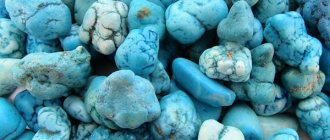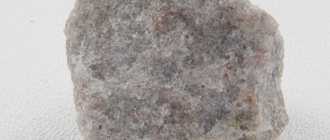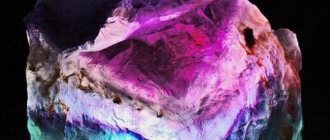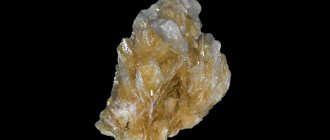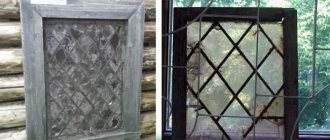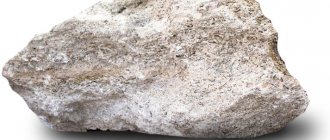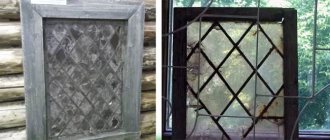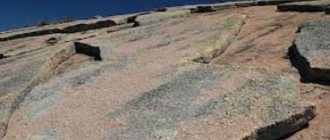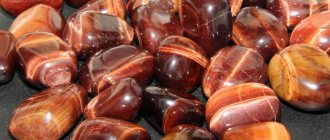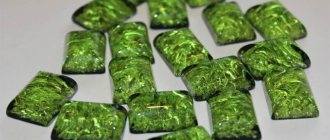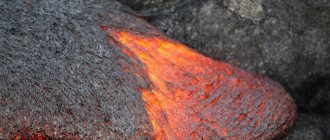Origin of sandstone
Psammolite forms at the bottom of rivers, lakes, seas and oceans. First, rocks are destroyed and turned into psammit - sand, then it is mixed with natural cementing substances, compressed under water pressure over centuries and transformed into a high-strength mineral. This process is called lithization. Also, in some cases, rock cementation occurs without the participation of connecting particles: during mechanical compression (pressure at great depths) or melting in the solid state. The longer sand is compressed, the more mature and durable this building material becomes.
In the case of the formation of minerals at the bottom of the seas and oceans, after millions of years, as a result of the natural movement of the earth’s crust (tectonic activity), the relief rises, the bottom becomes mountains and plains on the surface of the earth, and large deposits of valuable sedimentary rocks become available for mining.
Use of sandstone
- This stone is widely used in construction, decoration of premises and facades.
- The crushed rock is suitable for filling the foundation.
- The material is used in the manufacture of glass and paint and varnish products.
- It is becoming increasingly popular to build fences or pillars from sandstone.
- When strengthening the banks of reservoirs.
- For paving sidewalks, sandstone must be securely fixed, because it does not absorb cement-based solutions well. It is recommended to add construction adhesive to the fastening masses.
- Sandstone is popular when creating landscape compositions. By the way, some building mixtures are made from sandstone. It is suitable for lime, concrete, plaster.
Sandstone composition
Since this mineral is amazing in its diversity of species, there are many classifications by composition, domestic and foreign, that are scientifically interesting. Here we will focus on indicators useful to the stone processor, designer, builder and, of course, the buyer.
The most common is “savage” made from quartz sand. Less common are rocks made from feldspar, silicon, mica, glauconite and many other minerals. There are even rocks containing semi-precious impurities: tourmaline, opal, zircon, apatite, garnet, hematite, etc. Cement can be used: alumina, kaolin, silica, quartz, feldspar, opal, iron hydroxide (rust), etc.
There are also frequent inclusions of plant or animal nature, for example: wood in rock formed at the bottom of rivers, shells, fossil elements of extinct fish and animals in ocean stone.
Clayey sandstone with nummulites. The fragment includes grains of quartz, feldspar, glauconite, fragments and entire shells of nummulites (1–2 cm). Fine-grained, organogenic structure. The texture is layered.
Based on the amount of minerals in the sand, psammolites are divided into:
- monogenic (one mineral),
- oligomictic (two minerals),
- polymictic (three minerals or more).
Sandstone classification
Sandstone can be classified into several groups based on color and mineral composition. Eat:
- monomict rocks , which include glauconite, monomineral quartz, and feldspathic stones.
- The olicomicts include feldspathic-quartz and mica-quartz sandstones.
- Polymicts include arkoses and greywackes.
- Tuffaceous - stones in which the volcanic composition predominates.
There are several types of sandstone in construction and decorative arts. This:
- A porous shell formed from shells.
- Oolite is a stone that consists of round small balls.
- An analogue of oolite is considered to be pisolite , consisting of larger balls.
- Lithographic sandstone is also used .
Properties of sandstone
The data below is quite general.
If you need the parameters of the breed you have chosen, you should check them directly with the manufacturer or miner. The density of sandstone depends on the particle size, cementing agent, and other factors and can range from 1.6 g/cm3 to 2.77 g/cm3.
Some types are quite fragile, some are close to granite in strength.
It depends on external factors, the composition of sand and cement. For example, rocks with opal and chalcedony cement have high strength, while those with gypsum, clay, marly or calcareous cement have average strength. There are species that disintegrate in water. Hardness on the Mohs scale: from 4 to 6.
Dry compressive strength from 10 to 140 MPa.
Wear due to friction is 0.55-0.72 g/cm2.
Frost resistance - F50-F75. Withstands 50-75 freezing and thawing cycles.
Fire resistance - quartzite psammolite can withstand 1700-1770°C without physical changes.
Water absorption is low.
Some types have low thermal conductivity.
Application in construction
Sandstone is a unique material, so its uses are varied.
- Construction
- use for foundation construction;
- masonry of premises walls;
- Building arrangement: countertops, window sills, bar counters;
- Facing (resistant sandstones);
- interiors (flagstone, fountain): fireplaces, walls as a whole and its parts, stairs;
- floor coverings;
- facades (slabs are made from sandstone, maybe as insulation).
- It is an integral component of concrete, butts, and plaster.
- Landscape design (not only flat forms of stone are used, but also rubble stone and boulders are widely used):
- construction of paths (fine sandstones);
- creating a rock garden;
- pool lining;
- arrangement of fences, flower beds.
Types of sandstone
Based on the size of sand grains in the structure, psammitolites in Russia are classified as follows:
| Structure | Size of clastic grains, mm |
| Coarse-grained | 2 — 1 |
| Coarse grain | 1 — 0,5 |
| Medium grain | 0,5 — 0,25 |
| Fine grain | 0,25 — 0,1 |
| Fine grain | 0,1 — 0,05 |
Source: “Sedimentary rocks. Systematics and classification". Betkher O.V., Vologdina I.V.
You can also find heterogranular psammitolite - the result of the formation of a “savage” of particles that differ greatly in size. These may be larger pieces of rock from the early period than sand, as part of wild stone.
Quartzite-sandstone is very interesting - an intermediate link between quartz sandstone and quartzite. This breed is much denser and stronger than the “savage”. The process of transforming one mineral into another without melting is called metamorphism. Occurs as a result of high pressure and heat at the junctions of continental plates.
Quartz sandstone. The fragment contains quartz and small inclusions of feldspar and ore mineral.
Arkoses consist of more than 25% feldspar. The grains in the rock are angular and varied in size.
Arkose sandstone. The fragment contains grains of quartz, feldspar, hematite, and mica flakes.
Graywackes are very durable polymictic heterogeneous rocks of graphitic, black color with many unexpected shades and impurities.
Graywacke sandstone. It consists of acute-angled grains of plagioclase and fragments of volcanic-sedimentary rocks.
In lithography - printing designs using stone, lithographic sandstone was used - a high-density mineral with a homogeneous composition. It was sanded, a pattern was applied, then etched with a special compound and washed off. The result was a stone stamp, onto which paint was then applied and impressions were made.
It is also worth saying a few words about what is called shell sandstone. Essentially, it is limestone. It consists of fragments of shells that form a porous structure, lime cement, and sometimes sand. This fossil is more fragile, so it is used only for decoration.
A special place is occupied by oolites and pisolites - porous deposits of ooids - small balls cemented together. Pisolites are distinguished by the fact that the balls are larger than in oolites, more than 2 mm. in diameter. Oolite is also called egg stone, and usually it is also not sandstone at all, but limestone. Like other sedimentary rocks, they can vary greatly in composition.
According to the degree of processing, they are divided into: rubble stone (unprocessed), plastushka and fontanka (naturally breaking off pieces), flagstone (more dense “savage”, cut into plates), for construction they are cut into blocks suitable for masonry.
For decorative purposes, you can easily select sandstone of the desired texture: rough, rough or smooth. It depends on the size of the sand grains and the processing method. To obtain a smooth sandstone, it is ground and polished. Sometimes a protective coating is applied to preserve the natural color.
Tumbled stone is popular - processed in a special drum with abrasive particles. The result is something between simply cut pieces and those that in nature have been doused with water for years to form smooth “rounds” - pieces with uneven but rounded edges and a smoothed texture on the flat parts.
How to choose sandstone?
If we talk about colors, then most often found in nature is a stone of a gray-green hue, which is the cheapest. Using the firing technology, sandstone of a reddish and brown hue is obtained - it has a higher cost, but at the same time it looks very attractive and is more durable. But the yellow color of the stone indicates that the material should not be used in facade work, since it is not compressed enough and has a low density.
Sandstone stone, tumbled, thickness 2 cm, color terracotta red
Sandstone stone whitish color
Natural facing stone sandstone, yellow color
To determine the quality of sandstone, you need to lightly hit one stone against another - if a dull sound is heard, it means that during operation the material will separate into separate layers and quickly fall off.
Sandstone slabs of regular geometric shape are usually used as a material for cladding facades. In addition, you can purchase stone of an unusual type, including “ragged”, layered and sawn sandstone - with their help you can implement any design solution and create original masonry.
High-quality sandstone is clean, not because it was washed after mining, but because it was probably taken from lower layers that are not in contact with the ground
To ensure the quality of the stone, you should carefully inspect it. High-quality material is clean and smooth, as it is extracted from deep layers of soil. Delaminations at the ends indicate that the sandstone has been exposed to weathering, so it can quickly crumble.
Prices for different types of sandstones
Sandstone
Sandstone color
Due to the wide variety of factors influencing the formation of the breed, this environmentally friendly material pleases designers and owners of private houses with a wide color palette and a decent selection of patterns. Moreover, each cut has a unique pattern.
The most common is the gray “savage”, with a brownish or greenish tint - the glauconite type.
The presence of iron in the composition gives the mineral a rusty-brown or dark red tone - this is an elite red sandstone. It is very beautiful and durable. In addition, it does not fade under the sun, and is not afraid of significant changes in temperature and humidity. Probably the reason is that this species was formed in an older period and “matured” longer.
Some shades of red are obtained by firing raw materials in ovens at a temperature of 400-550 °C. As a result, the color palette expands from pink to terracotta. In addition, the practicality of the mineral increases: hardness and resistance to environmental influences increase.
Luxurious white sandstone and light gray are usually 90% quartz. They are often used to decorate facades, columns, and create architectural elements and sculptures.
Dark brown and black sandstone are formed as a result of the admixture of organic substances - bitumen. It looks presentable, especially in the decoration of facades and fences.
Gray-blue, gray-blue, gray, dark gray shades can be found under the general name: blue sandstone. This is a very durable material. The “dragon” texture looks especially impressive in this color.
The so-called yellow sandstone appears yellowish-brown or light brown due to phosphate cement. Very common in nature. The surface is rough, granular. Frost resistance is high, but strength is not very good, for this reason it is used for finishing.
You can also find other colors and design names: raspberry, honey, terracotta, tiger, tiger pink, rainbow, cappuccino, fallen leaves. The pattern is attractive, similar to wood: yellowish, yellow-brown, light brown with characteristic stains. Tiles with an amber pattern look beautiful.
Artificial sandstone
Natural stone has unique physical properties, which craftsmen have tried to convey to its artificial counterpart. Synthetic sandstone is made from cement and particulate matter and has slight differences compared to naturally occurring samples. Its structure is dense and uniform, while that of natural stone is granular. Artificial sandstone hardens over time and is less fragile than natural stones.
The palette of colors and shades of synthetic sandstone has a wide range, but manufacturers try to stick to natural tones and patterns. Its surface is smooth and non-slippery, and the installation method is similar to natural samples.
Sandstone deposits and mining
Deposits of the mineral are distributed throughout the world.
In Russia, this mineral was discovered in the Moscow and Kemerovo regions, in the Volga region, in the Urals, in the North Caucasus and Transcaucasia, in Eastern Siberia and the Far East.
The quarries are especially famous in the Rostov region and Dagestan. In Karelia, not far from the village of Shoksha, the ancient red quartzite-sandstone of the Proterozoic period, Shoksha porphyry, famous throughout the world, is obtained.
Shokshinsky porphyry - red quartzite-sandstone
They are mined in different ways, depending on the depth, size and strength:
- Stone-cutting. The most accurate, practical and gentle option. The fossil is cut into pieces.
- Air cushion method, or controlled explosion. A safe, gentle technique that allows you to obtain a material without microcracks. Holes are made in the formation into which air is pumped. Under air pressure, the mineral splits. Predictable places of splits.
- Drilling and blasting. The most dangerous method with big losses. Used for durable quartz and siliceous rocks when other options are not suitable. Holes are drilled in the rock where explosives are placed. After the explosion, pieces of uneven shape are obtained, about 70% of the volume and crushed stone - about 30%. The material is obtained with hidden defects.
Extraction of sandstone
The resulting raw material is sawed, then cut into standard blocks and slabs. Some of the material is sent to the factory for further processing, some is packaged, shipped directly from the quarry and delivered to customers throughout the country.
Formation
Wild stone was formed in places where many centuries ago there were oceans and seas.
Sedimentary rock was formed over centuries from grains of sand that remained as sediment. In places where sand accumulated under strong pressure, it was transformed into natural stone - sandstone. They are also formed as a result of the process of destruction of rocks under external influence, sediment fragments are transported by wind or water. And the more it was transformed, fragmented, the smaller they were. Then they are cemented. The deposit is located in Russia, Kazakhstan and Dagestan, Bulgaria, Poland. In Ukraine, the Donetsk basin has the largest sandstone deposits in Europe.
Where is it used?
- Architecture. Many architectural monuments were built from it or decorated with it. In St. Petersburg alone there are about 30 objects.
- Sculpture. For example, the Egyptian Sphinx.
- Construction of private buildings. There are types that have low thermal conductivity, thanks to which you can build an excellent sandstone house that will be warm in winter and cool in summer.
- Stone tile cladding of walls, floors, fireplaces, stairs.
- Balusters for stairs, columns, balustrades, window sills, countertops, sinks.
- Decorative items in the interior: flowerpots, statues, fountains.
- Mosaic: panels, bas-reliefs.
- Crafts.
- Laying and pouring the foundation - add crushed stone to the solution.
- For interior wall decoration, they are used in a similar way, choosing smaller fractions.
- Cladding of facades, steps, barbecue areas, blind areas, fences, gazebos.
- Sidewalks and garden paths.
- Landscape design: individually lying natural boulders of interesting shapes, garden sculptures, alpine slides, framing of flower beds, waterfalls, fountains, even laying out the bottom and coast of small reservoirs.
- Production of dinas - refractory bricks for lining the internal walls of electrometallurgical, open-hearth, coke and glass furnaces.
- Glass production.
- Asphalt production.
- As a flux in the smelting of copper and nickel.
- Raw materials for the production of ferrosilicon, silicon carbide (carborundum) and silumin (an alloy of aluminum and silicon).
- Production of millstones, grinding stones.
- Fertilizer production.
- Lithography is one of the ways to reproduce drawings.
- Jewelry production: beads, bracelets, earrings.
- Decoration of aquariums and terrariums - the cavernous type is most often used here: bottles of various shapes in white, beige and yellowish shades with a large number of through holes.
- Lithotherapy - treatment by applying heated stones and massage.
- Orthopedic tracks for children.
- Funeral services - slabs, monuments.
Egypt. Sphinx.
Making at home
If it is not possible to purchase natural stone, you can make the material yourself at home. To do this you will need clay, table salt, sand and liquid glass. All ingredients, except salt, should be thoroughly mixed until smooth. Prepare a solution from the salt in which the resulting mixture should be dissolved.
The resulting solution is poured into prepared molds and removed from the open air to dry. In order to save materials, the solution for large products can be prepared directly in molding containers. The remaining mixture can be stored in a tightly closed container in a cool place.
Sandstone is an ancient sedimentary rock. Thanks to its properties and unusual coloring, the stone has found wide application in construction and design art.
Variety of sandstone
The first thing a person sees is what a sandstone stone looks like.
It is distinguished not only by its chemical composition and physical properties, but also by color. For example, red sandstone is considered the most expensive and durable; it has been mined in Karelia for a long time; the rocks there can have different colors, from pinkish-orange to crimson.
The most common and accessible stone is sandstone with a yellow tint. Based on the combination and compression of clay rocks and sand, this particular species is formed. The binding agent in this union is clay. It is not so durable and therefore it is most often used to cover country and garden paths, but over time it loses its strength and begins to crack, requiring partial replacement.
